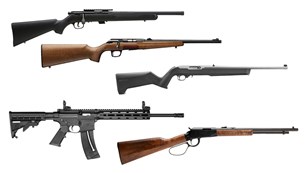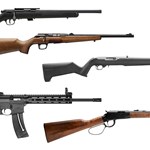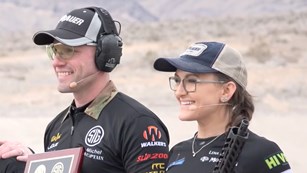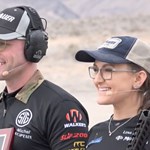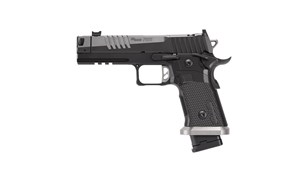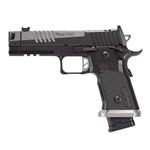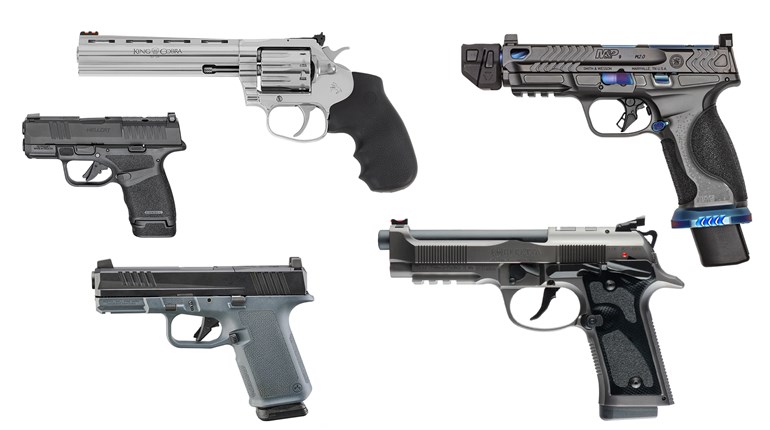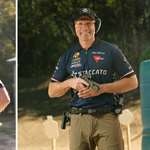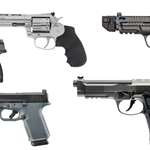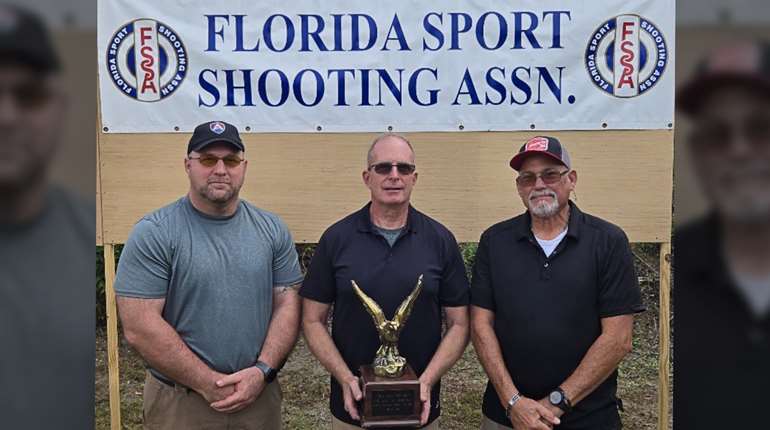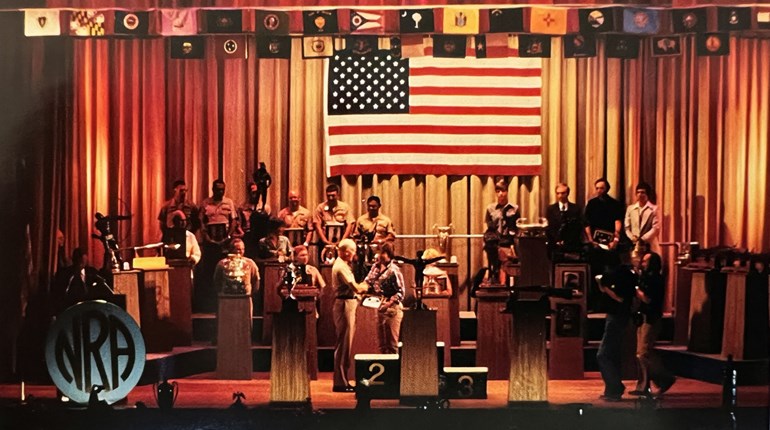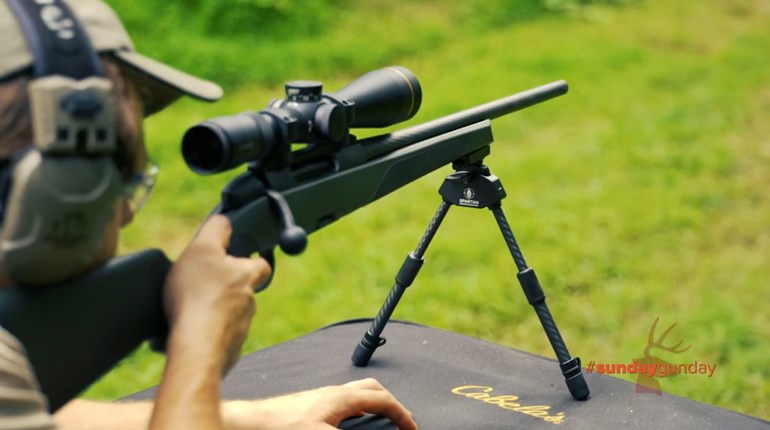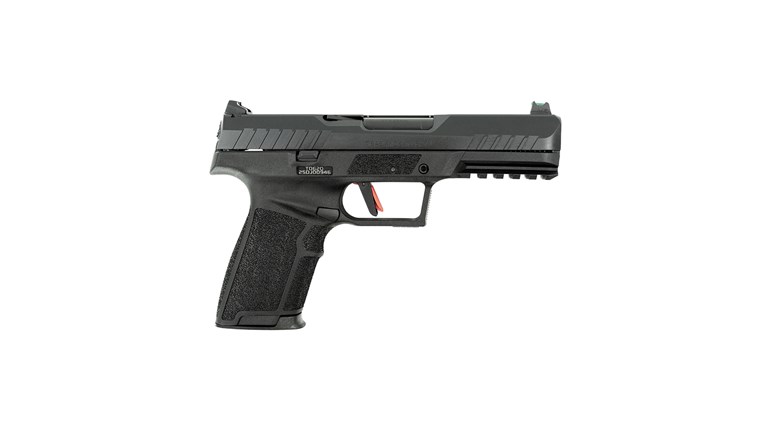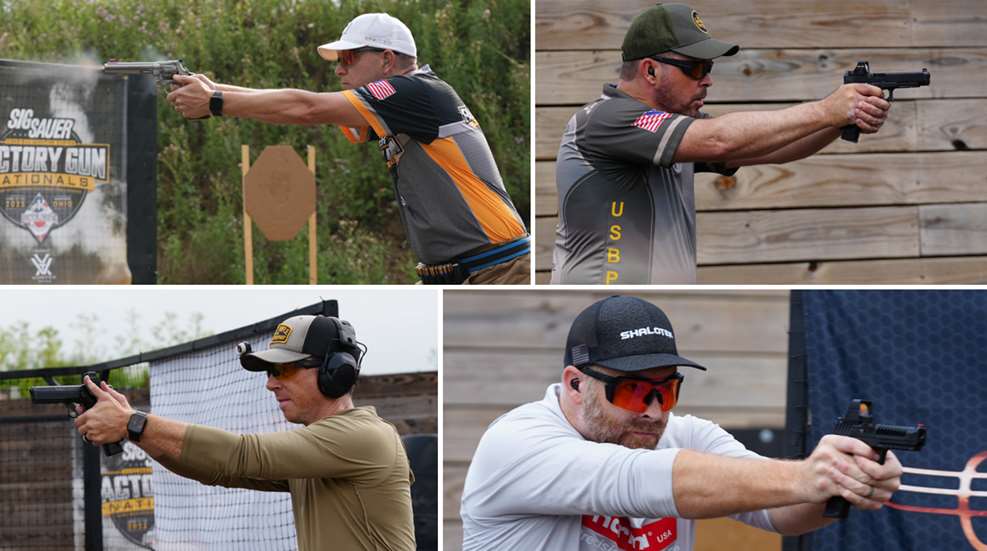
The USPSA Nationals returned to Cardinal Shooting Center in Marengo, Ohio, for the 2025 Factory Gun Nationals from June 25-29, marking the fourth USPSA Nationals to be held at the range since 2023. The central location, along with the surrounding area’s amenities, makes it easy for competitors to get to the match.
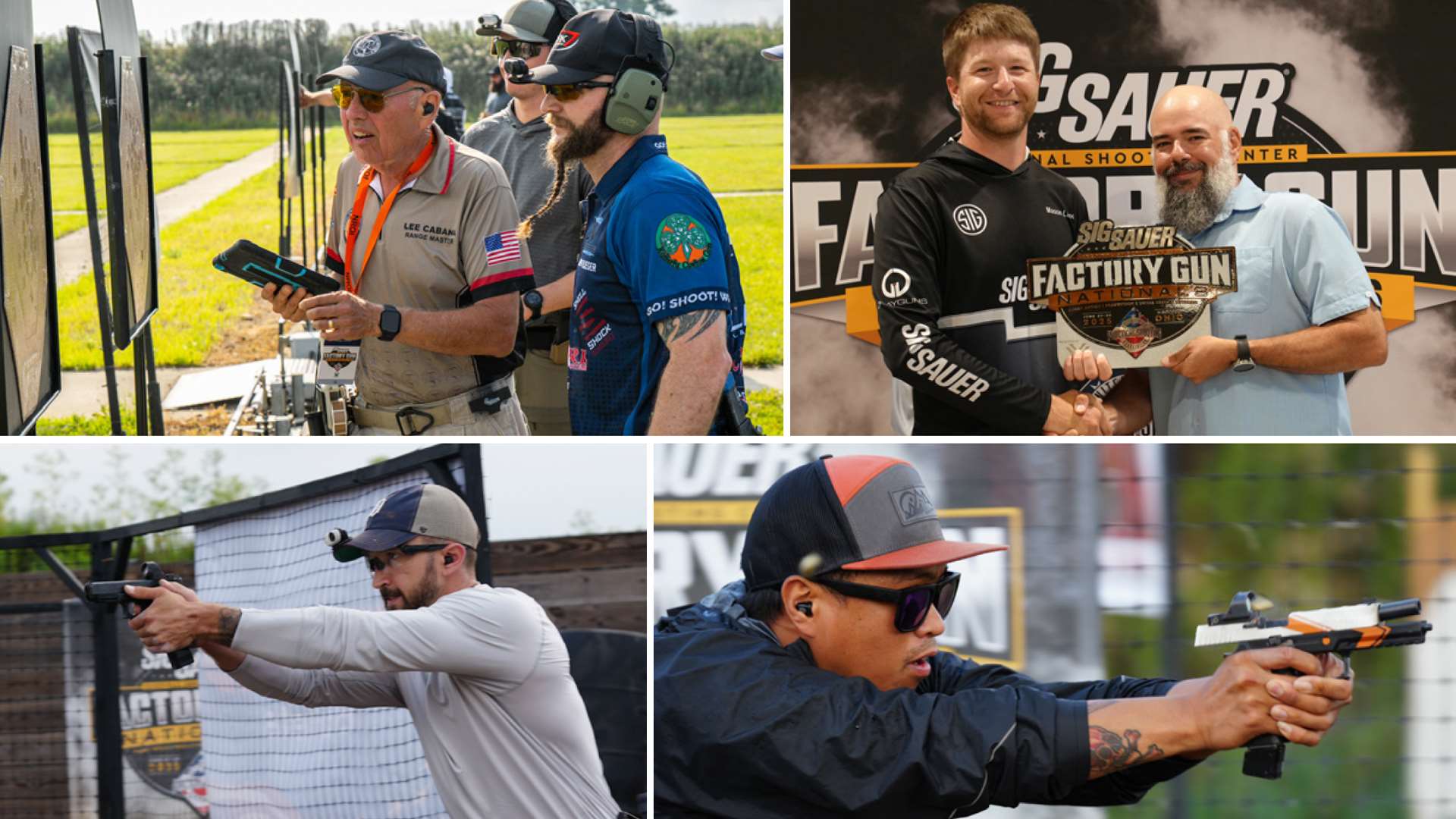
This year’s format no longer had Carry Optics as a stand-alone division Nationals. A decision was made last year to reduce the number of national events, which in turn put a premium on slots for the 2025 matches. The Factory Gun Nationals was no exception, with a sold-out match within minutes of open registration. To help offset the demand, a pre-match was included into the squad options; competitors could choose to shoot the match in two days, Wednesday and Thursday, instead of the main match three-day schedule. The two-day option allowed competitor squads with embedded Range Officers to shoot the 20 stages in two full-day flights instead of the main match’s three half-day flights. Competitors in the prematch were shooting the same stages for score, like the main match. (This is the same option for the USPSA Race Gun Nationals in Utah in October.)
Factory Gun divisions were Carry Optics, Production, Single Stack and Revolver. The name “Factory Gun” implies the style of firearm format that has a more restrictive ruleset as far as customization, compared to the other “Race Gun” divisions. The four divisions that made up this match more resemble the type of firearm that you would get from the “Factory,” compared to customized higher end race guns. Carry Optics and Production guns, the two most popular division at this Nationals, have the same equipment rules, including accessories and gear, with Carry Optics requiring the use of a slide-mounted optic, whereas Production is an iron-sighted gun.
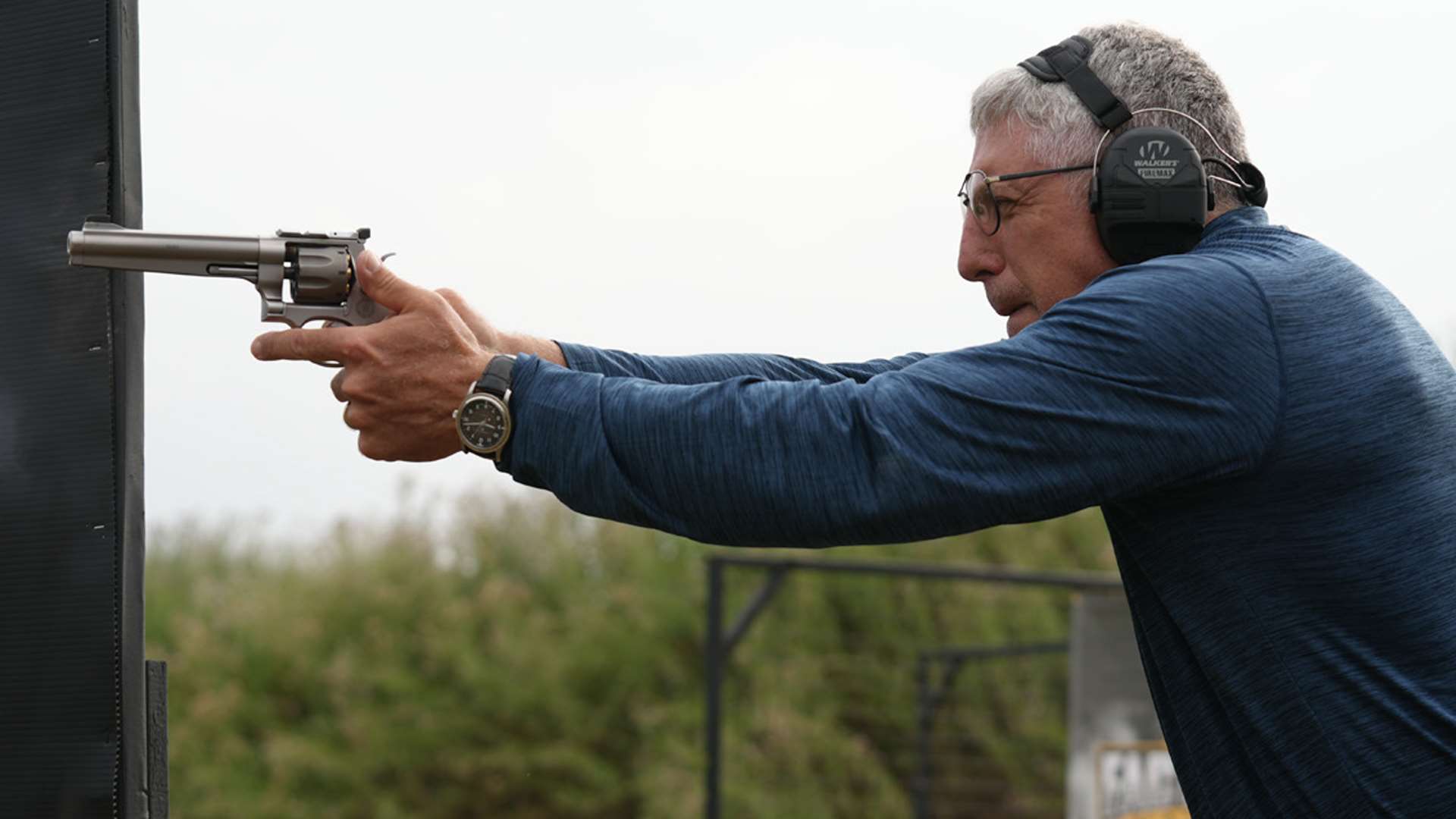
There were 412 competitors in Carry Optics, 53 in Production, 38 in Single Stack and 22 in Revolver. The mix of these four divisions make up about 50% of the overall reported activities from 2024 and allowed a more even distribution of section- and club-earned activities credits for slots. There were 532 scored competitors, making this the largest national event so far. In addition, there were seven competitors that ended up in Open, due to gear compliance issues that didn’t meet their chosen division requirements.
As a Match Director, when combining the most popular division like Carry Optics with the more “classic” division, there needs to be a consideration taken when designing and building stages, especially since the other three divisions are capacity-restricted with regard to how many rounds can be in the firearm. You can’t just build a match with all high-capacity-style stages; you need to understand how put a stage on the ground that isn’t forcing low-capacity divisions to perform standing reloads or build arrays that are quite frankly unfair to those competitors—however, you do not want to water a stage down, so to speak, for the high-capacity division.
Many times this can be accomplished with just how you have a start position and leaving targets that are visible from multiple locations that allow the competitors to build a stage plan around their capacity restrictions while opening up other viable stage plans for high-capacity firearms. The competitors are able to push their limits as well as their firearm capacity to their best advantage. Many stages offer multiple options with several “risk versus reward” engagements and arrays, such as taking the shots on the move or mixing in distance targets with closer arrays to try to eliminate a position. Many times it pays off; other times a competitor might find it wasn’t worth it. That is what makes shooting these matches so much fun and interesting for everyone.
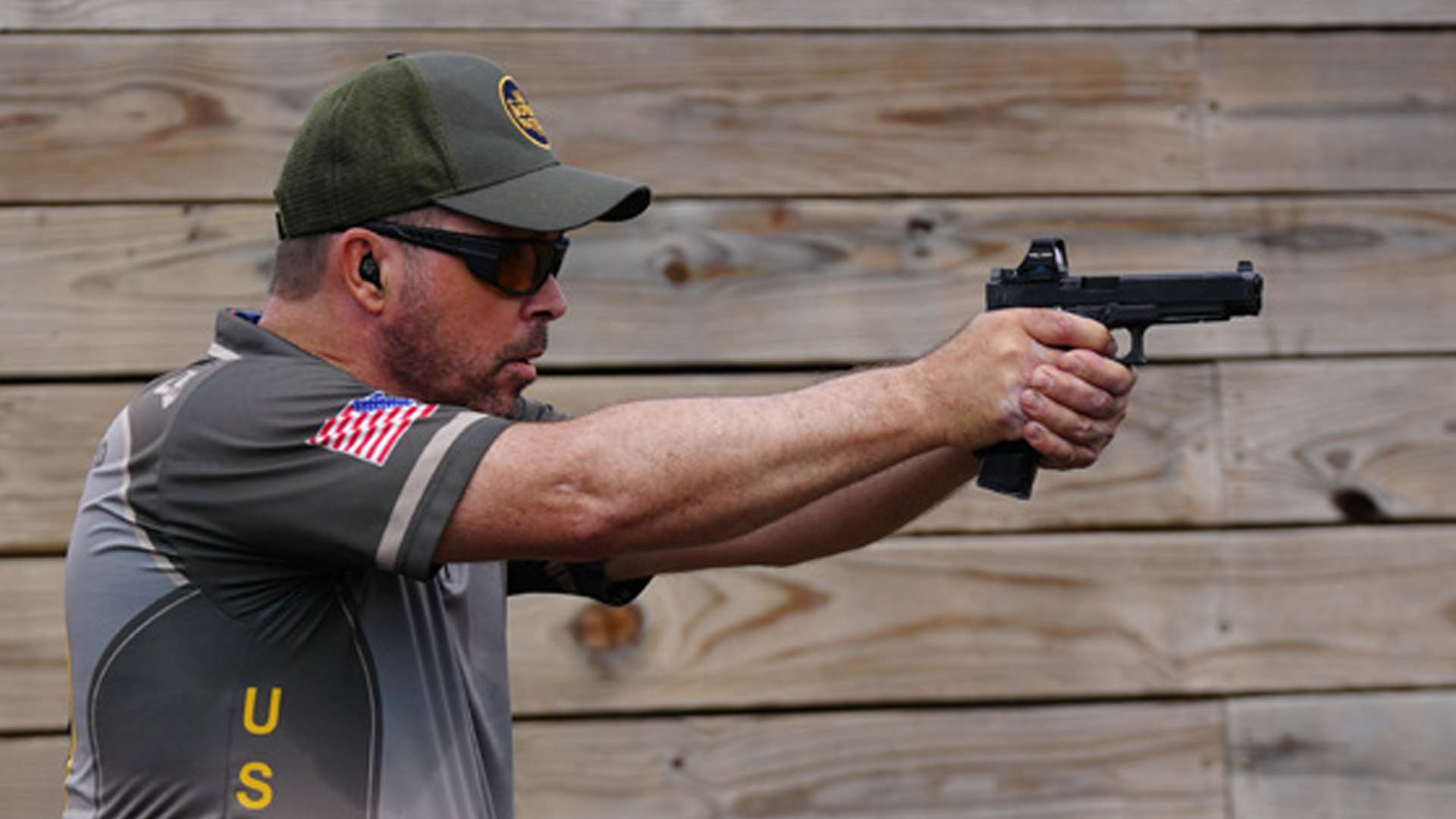
The stage designs for this match were created by several different experienced match directors and competitors. Shannon Smith and Drew Coleman, who were both assistant match directors and were there for setup, designed several of the stages. Matt Hopkins contributed several, as well as being part of the setup crew. Dave Jenkins, who has been a match director for the USPSA Nationals previously, submitted stages that were used, as did Tami Waite, who was a range master for the match. There were a few stages that were “borrowed” from other matches and modified to fit the flow of this match, and the one Fixed Time Standards stage was a rather easy design for me to come up with.
The stages as presented in the matchbook are concepts of what a competitor might see on that particular bay. The diagrams are never blueprints, so when looking at them you need to understand that what appears on paper will most likely not be what you get at the match. The round counts will be close, the idea of what the challenge you will face will probably be similar, but as far was the layout and how the targets present—well, it’s more like a Jackson Pollack painting in that there is something there, you’re just not sure exactly what it is.
The match consisted of 20 stages broken down into three zones across the bays provided by Cardinal Shooting Center. The bays at Cardinal have what has been referred to as wood berms and dirt berms. The wood berms’ bays have side walls that are wood, hence the name, but it doesn’t restrict the stage design and setup too much by using bullet traps. It actually provides for some flexibility with dropping targets lower, and changes up how you transition from arrays. Zone 1 for the match was in these bays, with a mix of stages that offered several different challenges, from Long Courses to Speed Shoots, with lots of activated targets.
When building the stages, the setup crews started with getting the right props, walls and stands into the bay, roughing them into position. The crews split into two teams and hit the ground running eight days before the first shots were scheduled. Over the course of the eight days, each stage was worked on, walked, discussed, changes made and reviewed from different perspectives.
A stage is never just set up one at time and then walked away from. Over the course of the eight days, the match evolved day by day. On Monday before the start of the match, the stages were turned over to the Range Masters for their inspection. The written stage briefings were completed and the stages were reviewed one at a time by the Range Masters, who were looking for many things. Questions were answered, things were changed where needed and updated.
By Tuesday morning, the stages were ready for the Chief Range Officers to walk the stages that they would be working. This is the final set of eyes on the stages before the start of the match; they are able to see the stage and decide how they are going to work it during the match. Their final set of fresh eyes can spot things that might have gotten overlooked, like protecting walls or where there might be a spot a competitor could do something that wasn’t intended. By Tuesday afternoon, the changes were made and the stages were open for viewing.
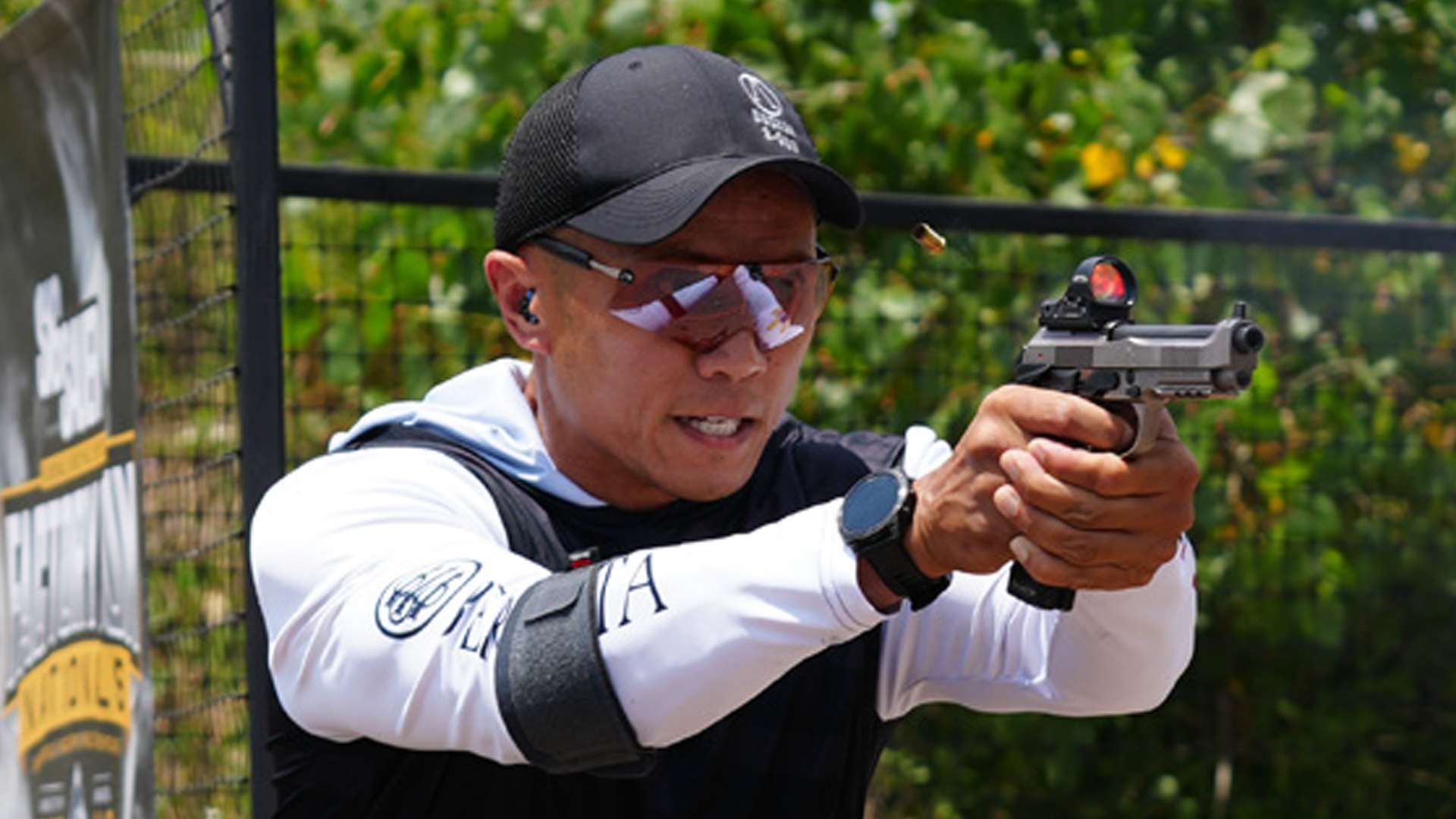
Zone 1 consisted of seven stages worth 595 points and had 119 required rounds. “Delta Queen” started Zone 1 with a 17-round stage that had seven IPSC targets, one that was an activated swinger from one of the three poppers. The stage presented competitors several different ways to go about engaging the arrays, which included how to go about the timing on the swinger. There were many different plans that were tried but the stage win here went to Master Class shooter Bridger Havens with a 11.99-second run, shooting 77 of the possible 85 stage points. Austin Hull grabbed a stage win in Production with a 13.59-second run, shooting 81 points. Ashley Robinson took the Ladies category win in Production and Kaylee Lane grabbed it in Carry Optics.
Stage 2, “I Shot the No Shoot,” was 20 rounds with a mix of eight IPSC targets and four steel. The mix of the poppers offered more of a challenge than many competitors gave them credit for. When walking the stage, things seem simpler than after the buzzer went off—and many competitors, both with dots and iron sights, were having to take several make-up shots on the poppers. When you are shooting a lower capacity division like Single Stack, you cannot afford too many of those extra shots. Paul Clark, Jr., grabbed a stage win in Single Stack shooting minor. Minor in Single Stack allows for two extra rounds in the magazine compared to major scoring, and it played to his favor here.
Stages 3 and 4 shared a bay and were designed to test a competitor’s timing skills on Stage 3 and Strong Hand shooting on Stage 4. Stage 3, “All About that Brass,” was eight rounds with three IPSC targets and two steel. A popper activated a bobbing target. The engagement sequence was up to the shooter and just how well they trusted themselves. Stages like this can create those moments of squad cheers, or in some cases, laughter, hopefully with you. There was zero room for errors with Revolver division with only eight rounds in the gun. Jay Slater ran this in 4.56 seconds with 34 of the available 40 points for a stage win. In Carry Optics, Jeremy Story ran it in 3.45 seconds shooting all As for the stage win. Justin William’s 4.00-second flat run took the Ladies Carry Optics stage win.
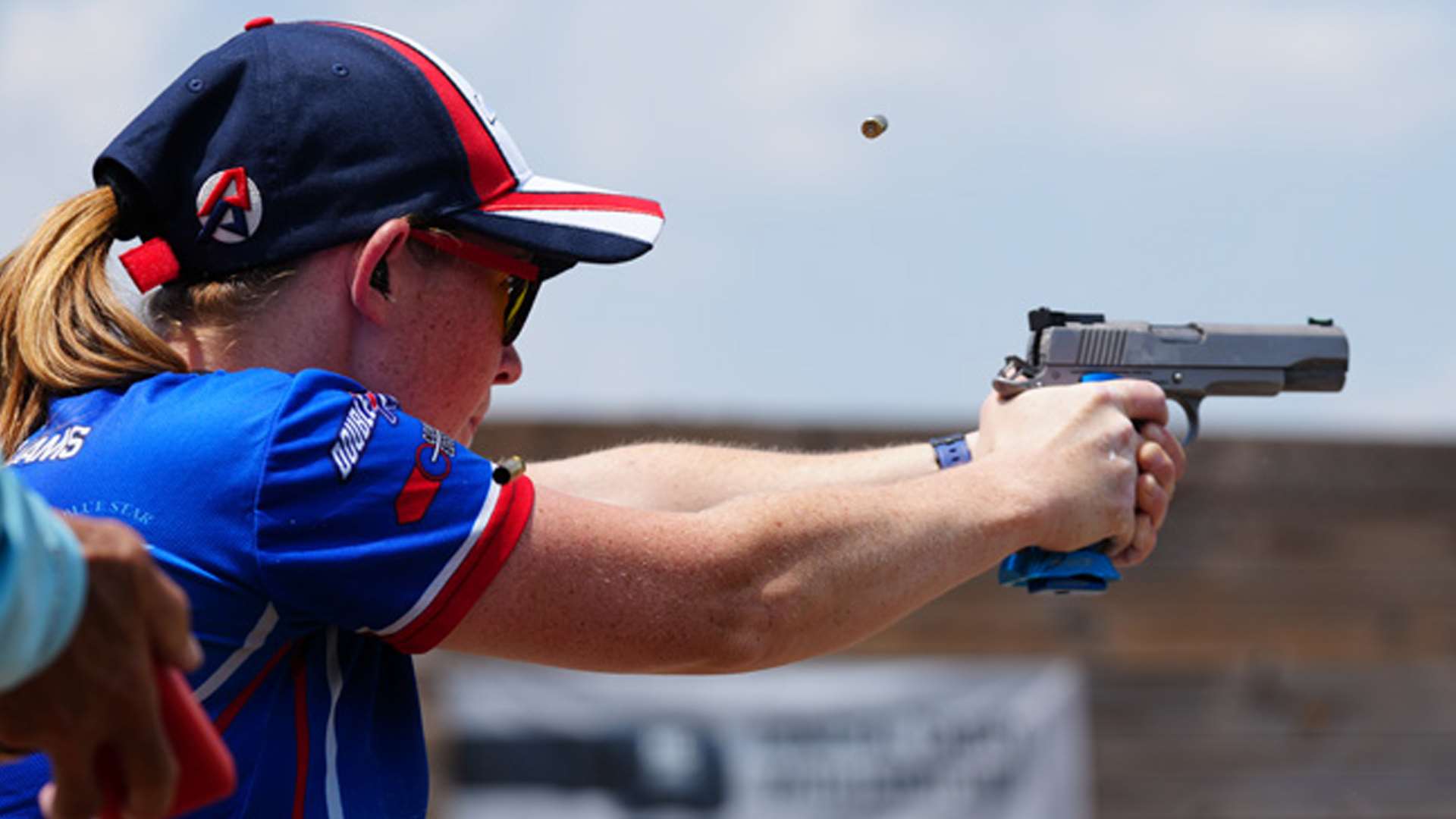
“Eye of the Timer” was 10 rounds, with three USPSA targets and four steel. The choice was which array would you do your strong-hand-only shooting on after the mandatory reload. Did you take the poppers freestyle, or the cardboard targets? It really just depended on your confidence level—can you shoot the open cardboard faster freestyle, and then reload into strong hand on the poppers? Many people thought that they could, and then struggled with the poppers strong hand only, while others tried strong hand on the cardboard, dropping points. Kelsi Lund had a 7.74-second run, taking the stage win in Ladies Carry Optics. Mason Lane won this stage in Production with a time of 6.91 seconds, and Jay Beal in Carry Optics took the win with a 6.05-second run.
The fifth stage in Zone 1 was a 15-rounder that had another activated swinger, six IPSC targets and three steel for the 15 rounds, with a “start anywhere” in the shooting area. Again, the entire stage was based on the activation sequence of that difficult swinger. With an “anywhere in the shooting area” start, competitors options increased; the idea was that this allowed them to build a stage plan that worked for their division and comfort level of how to engage the swinger. Bob Krogh took the stage win on “Glock You Like a Hurricane,” shooting 71 points in 14.92 seconds. Jay Slater grabbed another stage win in Revolver with a 17.32-second run.
“I Wanna Hold Your Mag” was the second-to-last stage in Zone 1 and was a 28-rounder. The handgun was unloaded and holstered, and all loading devices had to come from the tops of the tables. There were three, one centered and the other ones on either end of the shooting area. This stage also had two disappearing targets on opposite sides, each that required four hits to score. They were both activated by poppers. This made them a required target; you were not giving up 40 of the 140 points on this stage by not shooting them. There were lots of ways to skin this stage, and how the activators were taken made it very interesting to see how competitors worked through it. Christian Sailer grabbed the win in Carry Optics in 14.88 seconds and only down four points.
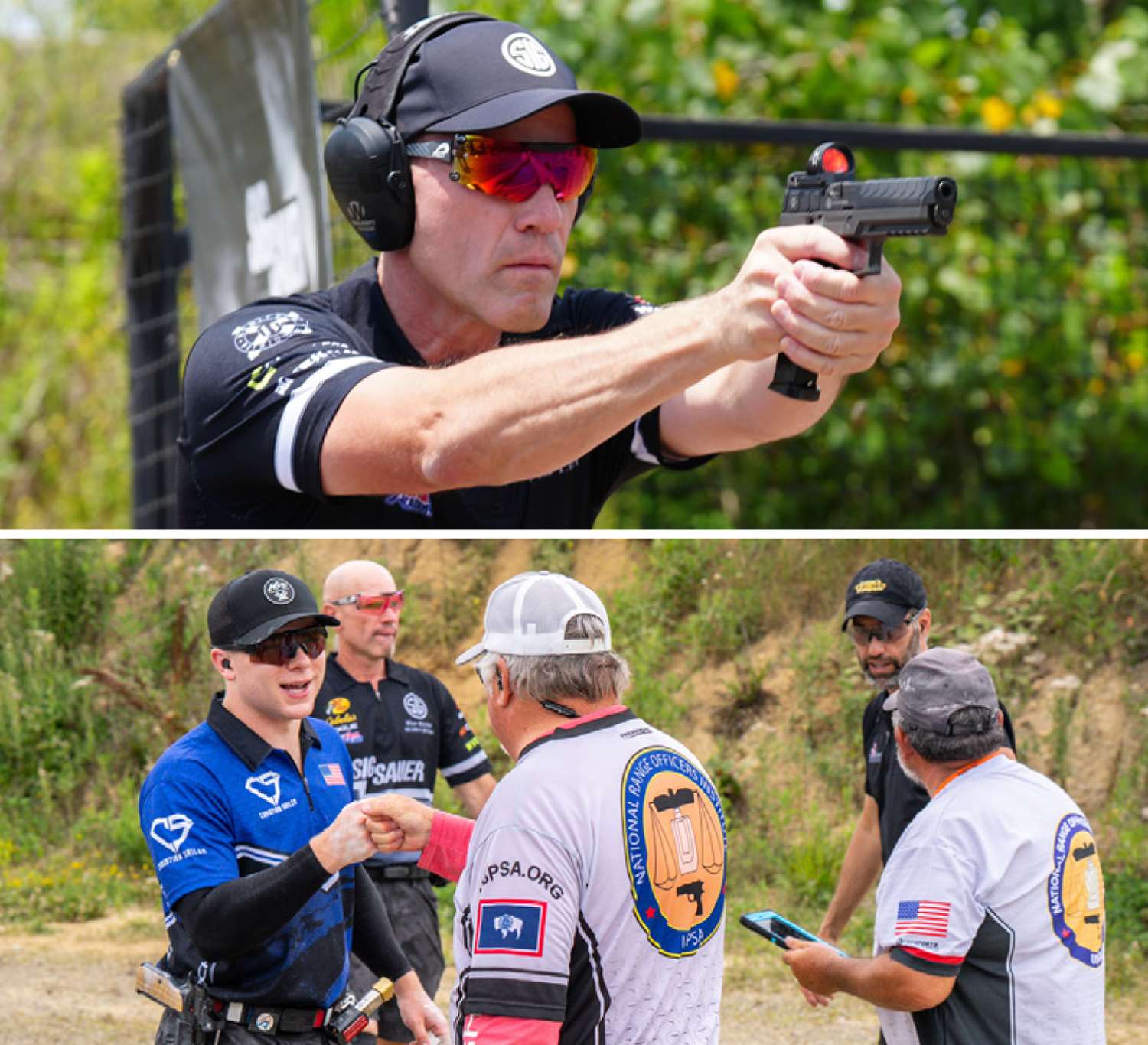
John Vlieger secured the win on the last stage in Zone 1 over Sailer. Stage 7, “Every Step You Take,” was another “start anywhere,” with 21 rounds for a total 105 points on the line to end Day 1. Here, there were nine cardboard and three steel for the competitors to work their way through. Sal Luna shot this in 16.35 seconds, down only four points for his stage win in Production. Jalise Williams grabbed herself a win in Ladies Single Stack division with a 19.78-second run, shooting 97 of the available 105 points.
Day 2 would kick off with more points being available in Zone 2, 725 points, with 145 rounds needed to get through the next six stages. Zone 2 also included the Fixed Time Standards stage. “Oops I Hit it Again,” otherwise known as Stage 8, was 14 rounds with six IPSC targets and two steel, one that activated a swinger. (Activated targets in this match were all set up by Shannon Smith.) In the Live Stream that we did during the match, we discussed the stage set and philosophy in detail. The swinger was the challenge, the engagement and timing for competitors is where they would either walk away with a smile or with their heads hung down on the “If you are finished” command. Mason Lane had a 10.93-second run, and Kevin Izatt ran it in 9.97 seconds in Carry Optics. Sasha Danjczek took the win in Ladies Single Stack.
Jalise Williams would take another stage win in Ladies Single Stack on Stage 9, “Can’t Feel My Trigger Finger.” It was a 14-round stage, with six IPSC targets and two steel. There was another activated swinger on this one, with some optional targets that could be taken from different positions. The swinger was another fast one, but allowed for competitors to try to push to pick up other targets after the activation; it was all based on their comfort level. Joey Sauerland picked up a borrowed Single Stack a few weeks before the match, and was showing everyone he was serious with a stage win here.
“Hit Me Maybe” was the Fixed Time Standards stage. Cardinal Shooting Center has turning targets on their bullseye pistol bay and we made use of them for this match, two strings at six seconds each. The first string was at 20 yards and required two rounds each, reload and one round each target strong-hand only. The second string was at 10 yards with the same sequence, but weak-hand only after the reload. The time is a total of six seconds, which is from the turn to expose the target and the turn for it to disappear. The start position was loaded and holstered with wrist above shoulders. Jeremy Reid shot 82 of the 90 points in Single Stack and Joseph Wyshel had 86 points shot, which was the highest score out of everyone combined.
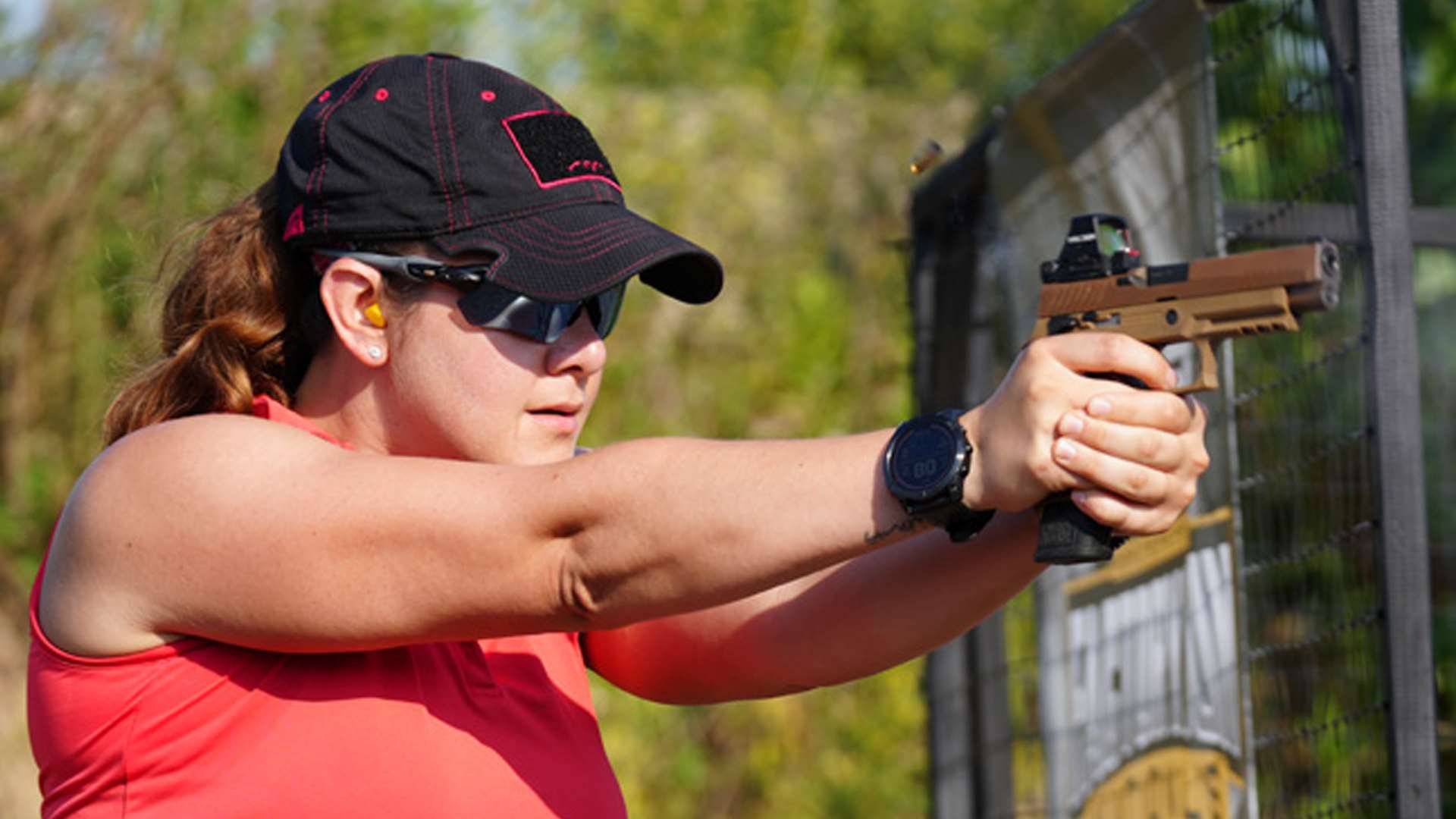
Zone 2 was split between the wooden berms and the dirt berms, or what is considered a more traditional style of bay. Stage 11 “Shot Through the Heart” was 28 rounds with six steel targets and 11 IPSC cardboard. There was a bobber that was activated, and in front of the bobber was a steel no-shoot target. The dirt berms at Cardinal are deep and can allow you to create stages with a lot of movement. In building the stages, we took this into account by adding the ability to engage targets on the move instead of move to a position, set up, shoot and then move. This adds to the “risk versus rewards,” especially if you are shooting minor and possibly dropping more points moving than setting up and shooting. Bridger Havens ran this one in 15.49 seconds in Carry Optics for the stage win.
“Don’t Go Breaking My Timer” had an uprange start position in the center with an array of targets before you started back up range. With tight shots and hard leans, competitors were forced in several spots for this 28-rounder. Mason Lane edged out Nils Jonasson for another stage win in Production, while Rachel Harper grabbed a Carry Optics stage win against the other ladies on stage 12.
Stage 13, “It’s Raining Brass,” went to Justine Williams in Carry Optics with a 17.16 second run, and Hunter Constantine picked up this stage in Carry Optics as well. This was a 30-round stage, 14 cardboard and only two poppers. It was set up to be a fast stage that would suck you into going too fast, as the first two arrays were open and close targets. As you worked your way down the long shooting area, however, the target distance and difficulty got considerably harder.
Zone 3 had 159 rounds and was worth the most, with 795 points up for grabs. Not necessarily by design, but the bay sizes in Zone 3 are just larger and allow for bigger stages and more targets, and that does add to the chase of a National title. You can be down going into the last day and still have a chance to get some momentum back, especially if these are more your type of stage. However, things were tight in all the divisions going to this zone. Day 3 is also where both the mental and physical aspects come together and are crucial to having a great finish. Competitors are tied from two days of competition, they have had to fight back on stages with misses or equipment issues. Anything and everything could be going right, or you could be fighting to hang on, and Day 3 is where it all comes together; you either finish strong or you watch your position drop.
Stage 14 “Don’t Stop Resettin” was not going to start this zone off easy either. The activated swinger was one of the toughest shots in the match with just the upper A and C zone available as it made its passes that had to be engaged through a port. The popper that activated it was downrange and the start was anywhere. You could start downrange or uprange, and it was shot both ways. Some thought the swinger shot would be easier, as it had slowed down working back from the downrange start; others went right at it from the uprange position, while some stood and took multiple passes on it. In Carry Optics, Jared Clanton won the stage, as did Jeremy Reid in Single Stack. It was great to watch the many ways this stage was shot, and it appeared that all plans were viable options.
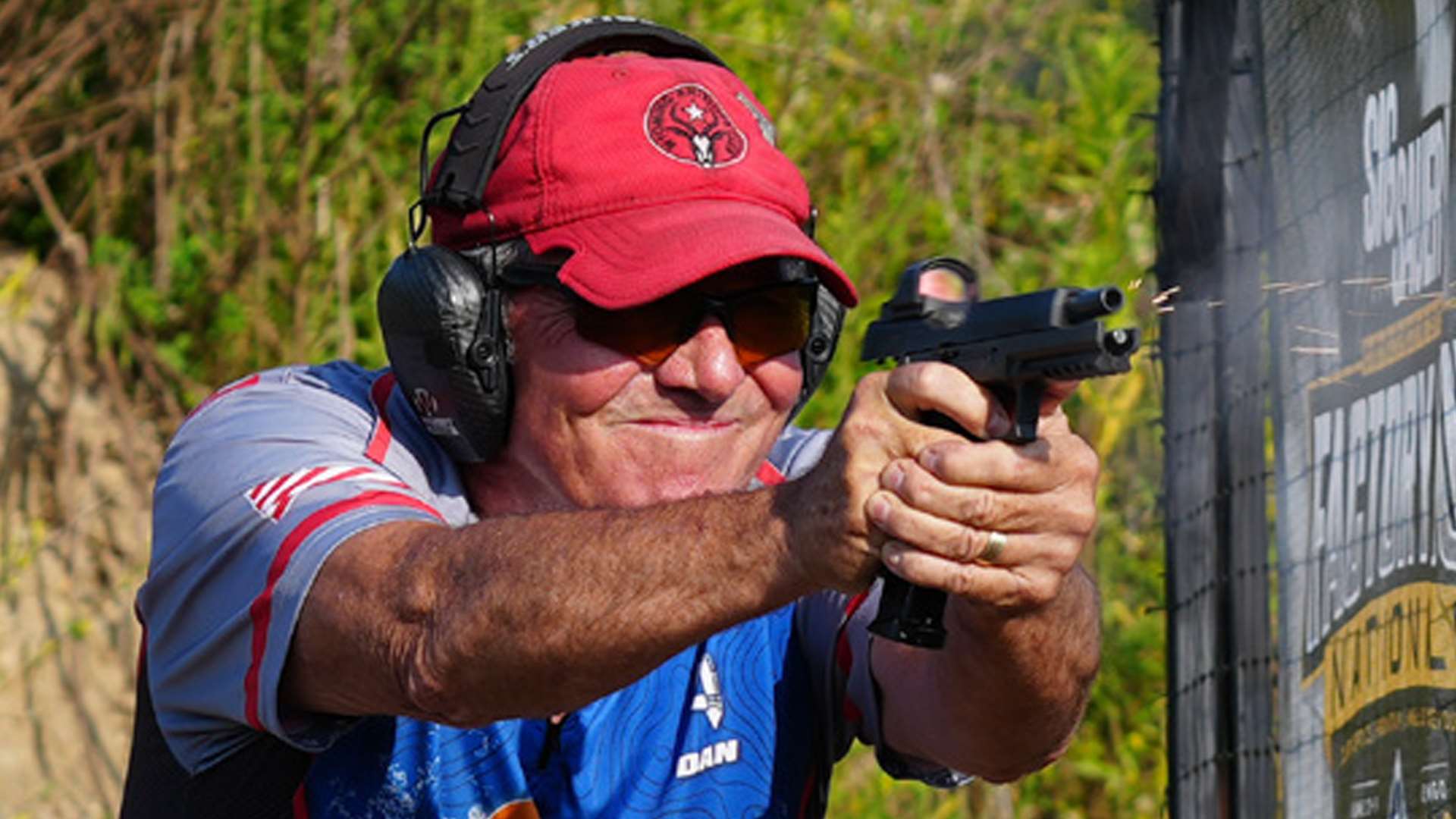
“Take Me Down to A Zone City” had lots of starts and stops for competitors to work through as they had to hit positions on both sides of the shooting area with hard leans into and out of positions. With 10 IPSC targets and six steel for 26 rounds, this was another stage that demonstrated many of the different plans that were seen over the course of the match. Justin Anderson in Carry Optics had a stage win in 16.75 seconds with 126 of the 130 points shot, while Justine Williams grabbed another against the ladies in Carry Optics as well.
Stage 16 and 17 shared a bay. “You Give Alphas a Bad Name” was 16 rounds and was designed to be a fast stage with a hard lean and tight array to push the competitors through. Stage 17, “Man! I Feel Like A GM,” had an activated bobber and six steel. Both stages required different levels of execution; on 16 you could go too fast and drop points, and on 17 you had to get the engagement and timing down or get caught standing waiting for a second pass on the bobber. Sailer crushed 16 for a stage win and Max Michel took the win on 17.
“Trigger Happy Together” was 26 rounds with 13 USPSA targets. This is an example of a stage diagram that was basically tossed once the build started and became something different on the ground. Never get offended by a diagram, just know that the stages will present you challenges that are better seen in person before you prejudge a match. JJ Racaza was fighting a recent elbow injury but was able to grab a Carry Optics stage win on this one. Brady Hardin was rocking a Single Stack for this match and won this stage with a 21.15-second run.
Stage 19 was a 31-round stage with 14 USPSA and three steel, with lots of tight shots and engagement through a port downrange, with lots of wide transitions in the downrange positions. This stage offered lots of options as well and saw Brantley Merriam take the win in Carry Optics. Sal Luna picked up another win in Production here as well.
Stage 20 wrapped up this zone and was the last stage of the match, 23 rounds with 10 USPSA targets and three steel. The steel was set at 18 yards and had wide transitions between the mini-poppers. An “anywhere in the shooting area” start saw this one shot many different ways as well. Mason Lane would take this stage win on his way to winning the overall in Production. Christian Sailer would do the same in Carry Optics. (See the full results of the match at the USPSA website.)
Five days of competition with the final three days being the main match saw many different things transpire. Competitors were able to push themselves as hard as possible through the challenges. Many things were learned over the course of the match. At the end of it there were many smiles, high fives and the support and camaraderie that we have all come to understand is the backbone of what makes up USPSA.
The hard-working volunteer staff did an excellent job in providing a safe, fun and fair match for all the competitors. With each competitor, with each “Make ready” and “If clear, hammer down and holster” to the last “Range is Clear,” we could not have asked for a better staff or had a better competition. The competitors were all great, the vendors and sponsors thrilled and enthusiastic during the match. Bobby and Kim and the crew from Southern BBQ were all smiles for everyone that visited. From the range to the awards and prize table, the event was well appreciated by everyone.
Now, let’s get ready for Utah in October.
Article from the July/August 2025 issue of USPSA’s magazine.



